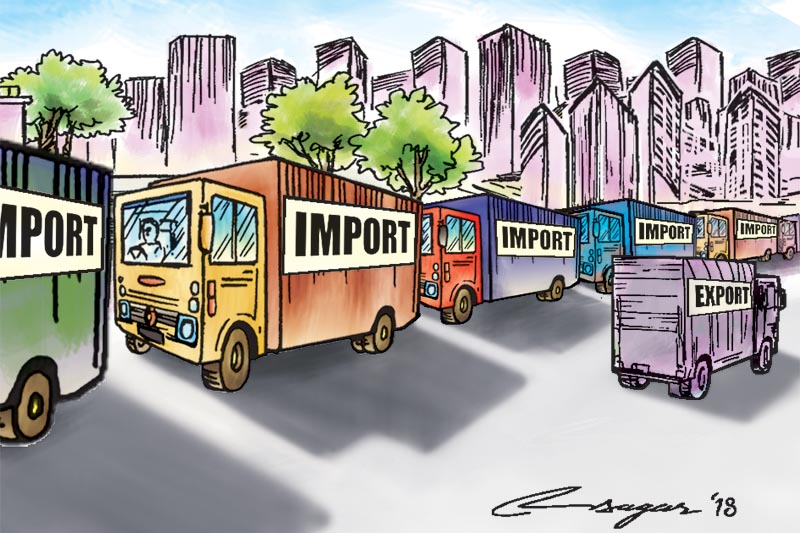BoP deficit widens to Rs 63.7 billion
Kathmandu, February 13
The outflow of money from the economy surpassed inflows by Rs 63.7 billion in the first half of the fiscal year as Nepal’s imports exceeded exports by almost 16 times.
The balance of payments (BoP) deficit of Rs 63.7 billion recorded in the first six months of the current fiscal year was almost 10 times more than in the same period a year ago, shows the latest macroeconomic report of Nepal Rastra Bank, the central bank. Nepal had recorded a BoP deficit of Rs 6.7 billion in the first half of the last fiscal year.
Nepal’s BoP deficit has been continuously widening since the start of this fiscal year despite robust growth in remittance income.
Nepalis working abroad sent home Rs 443.4 billion in the first six months of the current fiscal year, up 30 per cent than in the same period a year ago, says the latest NRB report. Remittance income had dropped 0.5 per cent in the first six months of the last fiscal year.
A healthy growth in remittance income, however, failed to offset pressure on BoP because of widening trade deficit.
Nepal’s trade deficit stood at Rs 678.5 billion in the first half of the current fiscal year, up 32 per cent over the same period a year ago. The trade deficit recorded in the mid- July to mid-January period was almost 23 per cent of the country’s gross domestic product of the last fiscal year. If trade deficit continues to widen at this pace, trade deficit as a percent of GDP would cross 50 per cent mark by the end of this fiscal year. This will exert pressure on the current account, which was in a deficit of Rs 152.2 billion in the first half of this fiscal year.
Nepal’s trade deficit has been widening because of its inability to boost exports.
Nepal’s merchandise exports grew by 10.3 per cent to Rs 45.4 billion in the first half of this fiscal year. Top five merchandise goods that Nepal exported in the sixmonth period were woollen carpets (Rs 3.7 billion), cardamom (Rs 2.7 billion), jute goods (Rs 2.4 billion), readymade garments (Rs 2.3 billion) and juice (Rs 2 billion).
On the other hand, Nepal’s merchandise imports surged by 30.5 per cent to a whopping Rs 723.9 billion in the review period. Top five merchandise goods that Nepal imported during the period were petroleum products (Rs 104.6 billion), vehicles and spare parts (Rs 55.9 billion), MS billet (Rs 38.7 billion), other machinery and parts (Rs 36.6 billion), and aircraft spare parts (Rs 18.4 billion).
As in the case of merchandise goods, Nepal’s services trade balance also slipped into a deficit of Rs 9.4 billion in the first six months of the current fiscal year. Nepalis visiting overseas destination for leisure or education purpose, for instance, spent Rs 48 billion in the first half of the current fiscal year.
This spending surpassed income generated from foreign tourists who visited Nepal, which stood at Rs 36.5 billion in the first six months of the current fiscal year.
This imbalance in exports and imports of goods and services played a key role in widening the balance of payments deficit, while Nepal’s inability to attract foreign direct investment (FDI) exacerbated the problem. FDI inflow dropped 69.6 per cent to Rs 4.4 billion in the first half of this fiscal year.
As inflow of funds into the economy remained lower than outflows, Nepal foreign exchange reserves shrank 6.7 per cent to $9.4 billion in mid-January. Nepal’s foreign exchange holdings are sufficient to cover merchandise imports of 8.9 months and merchandise and services imports of 7.8 months, according to NRB.






